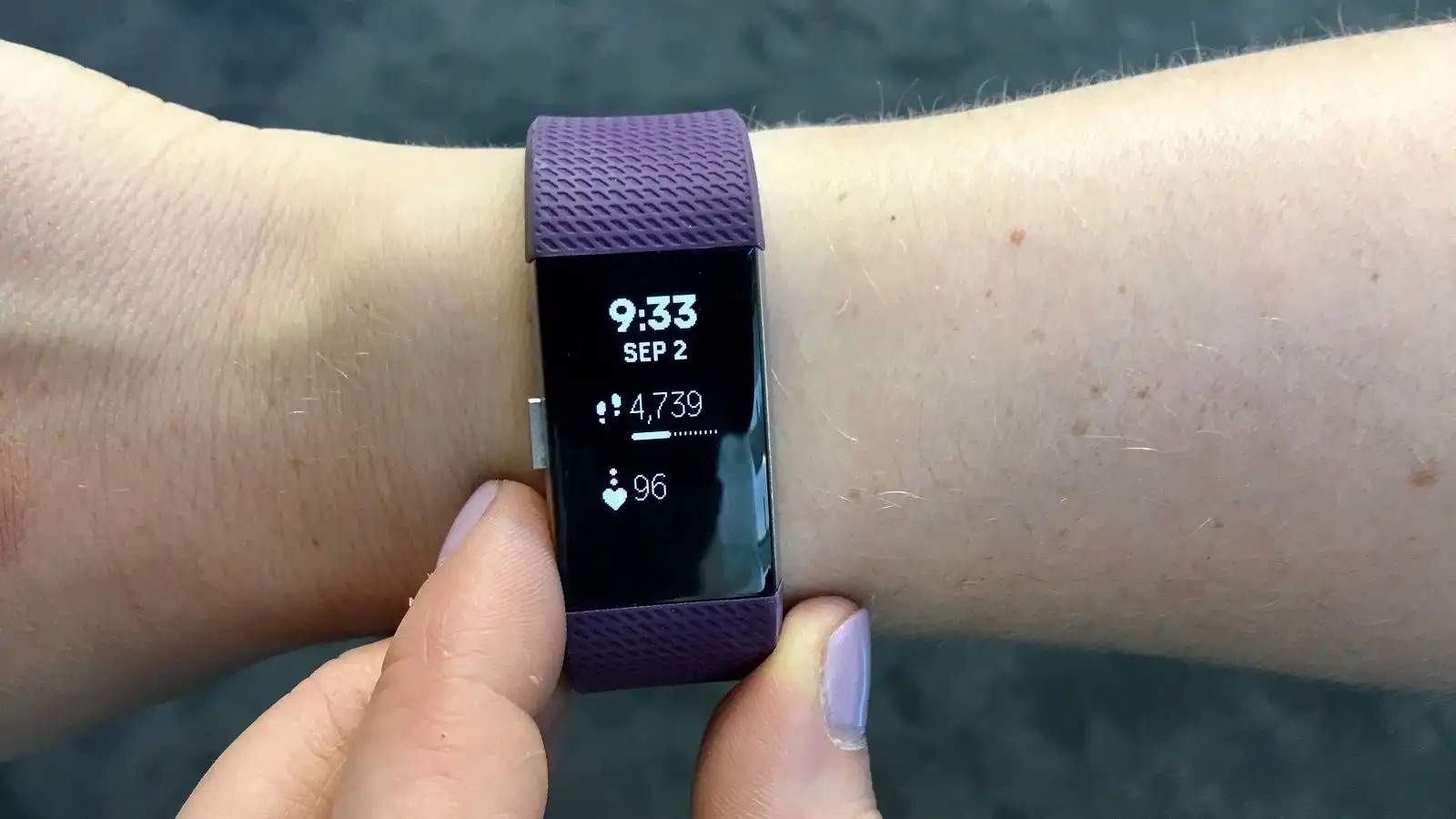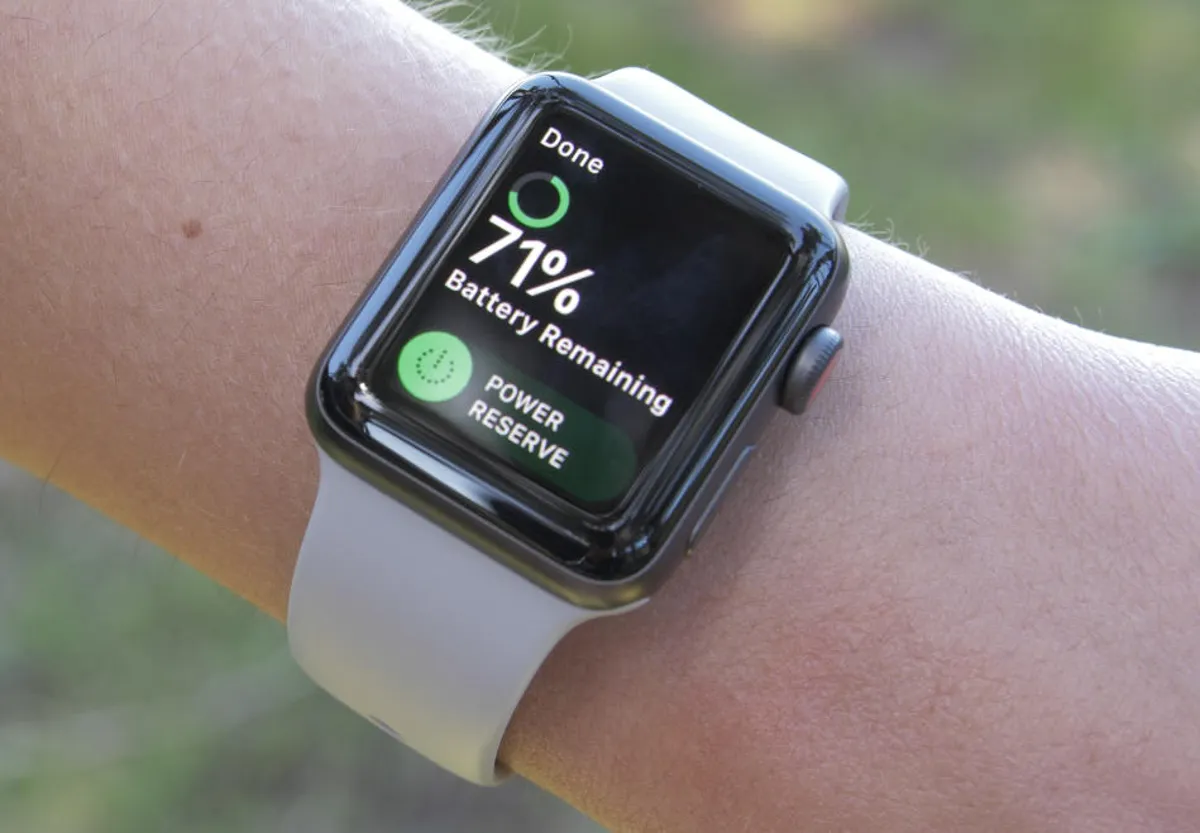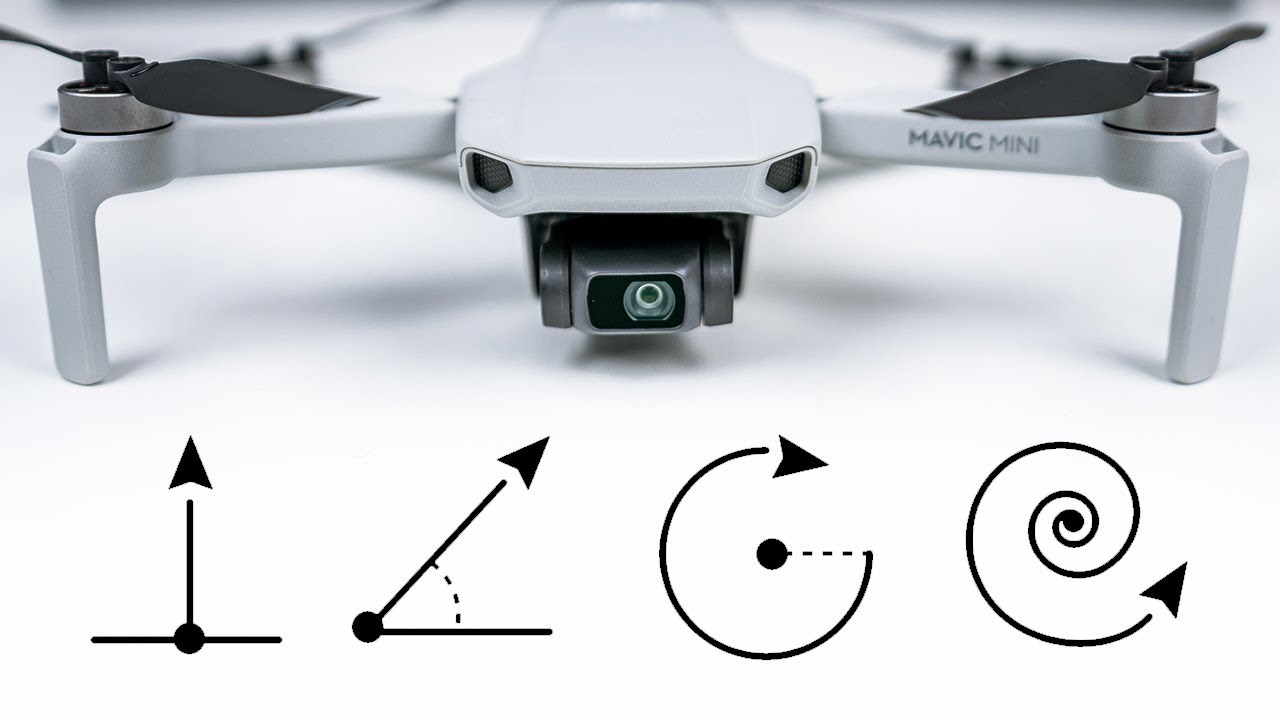Introduction
Welcome to the world of wearables, where fitness meets technology in a seamless blend of innovation and motivation. Among the myriad metrics tracked by fitness devices, the concept of "floors" has gained significant attention, particularly within the Fitbit community. Understanding the significance of floors on Fitbit goes beyond mere numbers; it encapsulates the very essence of elevating physical activity and embracing a more dynamic lifestyle.
As we embark on this exploration of floors on Fitbit, we delve into the vertical dimension of fitness tracking. Unlike steps, which primarily focus on horizontal movement, floors represent a vertical challenge, inviting users to conquer inclines, stairs, and varying elevations. This vertical conquest adds an exhilarating layer to the fitness journey, encouraging individuals to not only move more but also ascend to new heights – quite literally.
Throughout this article, we will unravel the intricacies of floors on Fitbit, shedding light on how these metrics are calculated, the benefits of tracking them, and practical tips for increasing your floor count. Whether you're a seasoned Fitbit enthusiast or a newcomer to the world of wearables, this comprehensive guide aims to enrich your understanding of floors and inspire you to elevate your fitness endeavors.
Join us as we ascend altitudes and uncover the multifaceted significance of floors on Fitbit. It's not just about reaching higher levels; it's about embracing the upward journey towards improved health, vitality, and a renewed sense of accomplishment. So, fasten your fitness trackers and get ready to elevate your perspective on what it means to truly rise to the occasion.
What are Floors on Fitbit?
Floors on Fitbit represent a vertical metric that measures the number of floors or levels climbed throughout the day. This encompasses any elevation gain achieved through activities such as climbing stairs, walking uphill, or ascending steep terrains. Essentially, each time you ascend the equivalent height of 10 feet, Fitbit registers an additional floor to your daily tally.
Unlike step count, which predominantly captures horizontal movement, the concept of floors introduces a vertical dimension to fitness tracking. This feature is particularly beneficial for individuals who engage in activities involving inclines or staircases, as it provides a more comprehensive overview of their physical exertion.
Fitbit's floor tracking feature serves as a motivator for users to incorporate varied forms of movement into their daily routines. Whether it's opting for the stairs instead of the elevator or embarking on a hillside hike, the ability to monitor floor count encourages individuals to diversify their physical activities and embrace vertical challenges.
Moreover, floors on Fitbit contribute to a holistic representation of one's overall activity level. By integrating both steps and floors into the tracking mechanism, Fitbit offers a more nuanced perspective on daily movement patterns. This dual approach enables users to appreciate the full spectrum of their physical exertion, encompassing both horizontal and vertical elements.
In essence, floors on Fitbit serve as a testament to the brand's commitment to comprehensive fitness tracking. By acknowledging the significance of vertical movement and providing a dedicated metric for floor count, Fitbit empowers users to pursue a more well-rounded approach to their fitness endeavors. This inclusive approach resonates with individuals seeking to elevate not only their physical activity levels but also their overall health and well-being.
In the next section, we will delve into the intricacies of how floors are calculated on Fitbit, shedding light on the underlying mechanisms that contribute to this vertical metric. Join us as we unravel the fascinating dynamics of floor tracking and explore the transformative impact it can have on your fitness journey.
How are Floors Calculated?
The calculation of floors on Fitbit involves a sophisticated interplay of sensors and algorithms designed to accurately capture vertical movement and translate it into a tangible metric. Fitbit devices employ altimeters, which are specialized sensors capable of detecting changes in elevation. These altimeters are pivotal in the precise calculation of floors, as they discern variations in height as users navigate different terrains and inclines throughout the day.
When an individual ascends the equivalent height of 10 feet, as detected by the altimeter, Fitbit registers an additional floor to their daily count. This calculation is underpinned by the intricate calibration of altimeter data, which enables the device to discern subtle changes in elevation with a high degree of accuracy.
Moreover, Fitbit's algorithm incorporates intelligent filtering mechanisms to differentiate between purposeful elevation gain, such as climbing stairs or hiking, and incidental fluctuations in height that may occur during regular daily movement. This discernment ensures that only deliberate vertical movement contributes to the floor count, thereby maintaining the integrity and relevance of the metric.
Additionally, Fitbit devices leverage advanced motion sensors to corroborate altimeter data, thereby enhancing the precision of floor calculations. By synergizing altimeter readings with motion data, Fitbit devices can discern the specific patterns and characteristics of vertical movement, further refining the accuracy of floor tracking.
Furthermore, Fitbit's commitment to user-centric design is evident in its consideration of varying user preferences and environmental factors. The devices are equipped with customizable settings that allow users to adjust the sensitivity of floor tracking based on their individual stride and gait. This personalized approach ensures that floor calculations align closely with each user's unique movement patterns, enhancing the overall accuracy and relevance of the metric.
In essence, the calculation of floors on Fitbit is a testament to the brand's dedication to precision and user-centric innovation. By seamlessly integrating altimeter data, motion sensors, and customizable settings, Fitbit devices deliver a comprehensive and accurate depiction of vertical movement, empowering users to track their floor count with confidence and clarity. This meticulous approach underscores Fitbit's commitment to providing users with meaningful and actionable insights into their physical activity, fostering a deeper engagement with their fitness journeys.
Benefits of Tracking Floors
Tracking floors on Fitbit offers a multitude of benefits that extend beyond mere numerical representation. By incorporating vertical movement into the fitness tracking paradigm, Fitbit empowers users to embrace a more holistic approach to their physical activity. Here are the compelling advantages of tracking floors on Fitbit:
-
Comprehensive Activity Monitoring: By integrating floor count alongside step tracking, Fitbit provides a more comprehensive overview of daily movement patterns. This dual approach enables users to gain a nuanced understanding of their physical exertion, encompassing both horizontal and vertical elements. As a result, individuals can appreciate the full spectrum of their activity levels, fostering a more holistic perspective on their fitness endeavors.
-
Vertical Challenge: Tracking floors introduces an exhilarating vertical challenge, inspiring users to conquer inclines, stairs, and varying elevations. This dimension of vertical movement adds an invigorating layer to the fitness journey, encouraging individuals to not only move more but also ascend to new heights – quite literally. The pursuit of floor count motivates users to seek out opportunities for vertical movement, thereby diversifying their physical activities and infusing their routines with dynamic challenges.
-
Staircase Encouragement: For individuals who have access to staircases in their daily environments, tracking floors serves as a compelling motivator to opt for stairs over elevators. This simple yet impactful choice can significantly enhance daily physical activity, contributing to improved cardiovascular health and overall fitness. The ability to monitor and quantify the elevation gain achieved through stair climbing encourages individuals to embrace this accessible and effective form of exercise.
-
Enhanced Caloric Expenditure: Vertical movement, such as climbing stairs or ascending steep terrains, incurs a higher caloric expenditure compared to level ground walking. By tracking floors, users gain insight into the additional energy expended during vertical activities, thereby enhancing their awareness of the diverse caloric demands associated with varying forms of movement. This heightened awareness can inform more targeted fitness goals and facilitate a more balanced approach to energy expenditure.
-
Motivational Milestones: The visual representation of floor count serves as a motivational milestone, spurring users to set and achieve vertical movement targets. Whether it's aiming to climb a certain number of floors per day or conquering a specific elevation goal, tracking floors provides users with tangible benchmarks that can drive motivation and foster a sense of accomplishment. This gamified approach to vertical movement encourages sustained engagement and cultivates a positive mindset towards physical activity.
In essence, tracking floors on Fitbit transcends numerical tracking; it embodies a gateway to diversified movement, enhanced motivation, and a more comprehensive understanding of one's physical exertion. By embracing the vertical dimension of fitness tracking, users can elevate their perspectives and embark on a dynamic journey towards improved health, vitality, and a renewed sense of accomplishment.
Tips for Increasing Floors
Elevating your floor count on Fitbit involves embracing vertical challenges and incorporating diverse forms of movement into your daily routine. Here are practical tips to help you increase your floor count and elevate your fitness endeavors:
-
Stairway Strategy: Embrace the opportunity to conquer staircases in your daily environment. Whether at home, work, or public spaces, opting for stairs over elevators can significantly contribute to your floor count. Consider integrating stair climbing into your routine as a deliberate form of vertical movement.
-
Hillside Hikes: Explore outdoor terrains that feature inclines and hillsides. Engaging in hiking or brisk walking on uphill paths not only enhances your cardiovascular workout but also contributes to substantial elevation gain, thereby boosting your floor count.
-
Step Variation: Incorporate diverse step variations into your workouts. Activities such as step aerobics, stair-stepping exercises, and high-knee drills can effectively increase your floor count while offering a dynamic and engaging workout experience.
-
Vertical Challenges: Seek out opportunities for vertical challenges in your fitness regimen. This may include participating in indoor rock climbing, utilizing stair-climbing machines at gyms, or engaging in activities that simulate uphill movement to intensify your vertical exertion.
-
Daily Detours: Embrace detours that involve elevation gain. Whether it's taking a scenic route with inclines during your walks or opting for outdoor paths that feature natural elevation changes, incorporating these detours can infuse your daily movement with diverse vertical elements.
-
Consistent Climbing: Set daily or weekly goals for floor count and strive to achieve them consistently. By establishing attainable targets for vertical movement, you can gradually increase your floor count and cultivate a habit of purposeful elevation gain.
-
Staircase Challenges: Challenge yourself to climb a specific number of floors each day. This can be achieved by incorporating dedicated stair climbing sessions into your routine or setting targets for the number of times you ascend and descend staircases throughout the day.
-
Community Inclines: Explore local communities or parks that feature staircases, hilly landscapes, or elevated trails. Engaging in group activities or solo explorations in these environments can provide ample opportunities for vertical movement and contribute to your floor count.
By integrating these tips into your fitness journey, you can elevate your floor count on Fitbit while infusing your physical activities with dynamic challenges and diverse forms of movement. Embracing the vertical dimension of fitness tracking not only enhances your floor count but also enriches your overall fitness experience, fostering a balanced and engaging approach to physical activity.
Conclusion
In conclusion, the concept of floors on Fitbit transcends numerical tracking; it embodies a gateway to diversified movement, enhanced motivation, and a more comprehensive understanding of one's physical exertion. By embracing the vertical dimension of fitness tracking, users can elevate their perspectives and embark on a dynamic journey towards improved health, vitality, and a renewed sense of accomplishment.
As individuals strive to increase their floor count, they are not merely chasing numbers; they are embracing a multifaceted challenge that encourages them to seek out vertical movement opportunities, conquer staircases, explore hilly terrains, and diversify their physical activities. This pursuit of floors represents a paradigm shift in the way individuals perceive and engage with their fitness journeys. It introduces an invigorating layer of motivation, inspiring users to not only move more but also ascend to new heights – quite literally.
The benefits of tracking floors extend beyond the quantifiable metrics. It fosters a mindset of embracing varied forms of movement, from stair climbing to hillside hikes, and encourages individuals to infuse their routines with dynamic challenges. Moreover, the visual representation of floor count serves as a motivational milestone, driving users to set and achieve vertical movement targets, thereby cultivating a positive mindset towards physical activity.
Fitbit's dedication to precision and user-centric innovation is evident in the meticulous calculation of floors, which seamlessly integrates altimeter data, motion sensors, and customizable settings. This approach ensures that floor calculations align closely with each user's unique movement patterns, enhancing the overall accuracy and relevance of the metric.
As users immerse themselves in the pursuit of floor count, they are not only elevating their physical activity levels but also embracing a more holistic approach to their well-being. The vertical challenge posed by tracking floors serves as a compelling catalyst for individuals to transcend their comfort zones, explore new avenues of movement, and discover the exhilaration of conquering inclines and elevations.
In essence, the concept of floors on Fitbit represents a transformative invitation to rise to the occasion – to ascend altitudes not only in the physical realm but also in the realms of motivation, perseverance, and personal growth. It symbolizes the upward journey towards a more vibrant and dynamic lifestyle, where every ascent signifies a triumph, every floor conquered represents a victory, and every step taken embodies the unwavering commitment to reaching new heights.
So, as you fasten your fitness trackers and embark on your daily pursuits, remember that each floor climbed is not just a number; it's a testament to your resilience, your dedication, and your unwavering resolve to rise above – one step at a time, one floor at a time. Embrace the vertical challenge, savor the exhilaration of ascent, and let each floor conquered be a reminder of your unyielding capacity to rise, soar, and elevate both body and spirit to newfound heights.

























